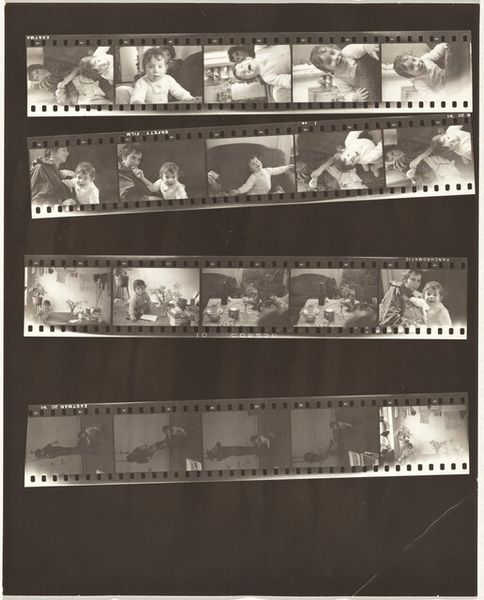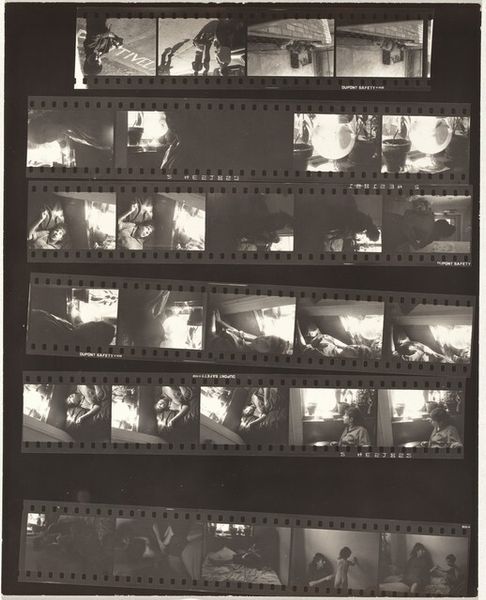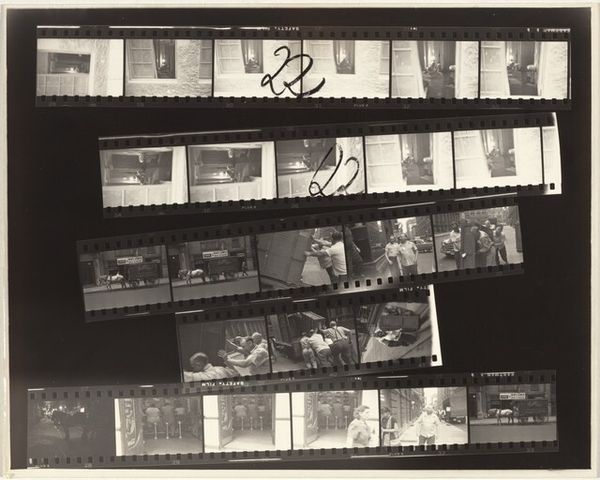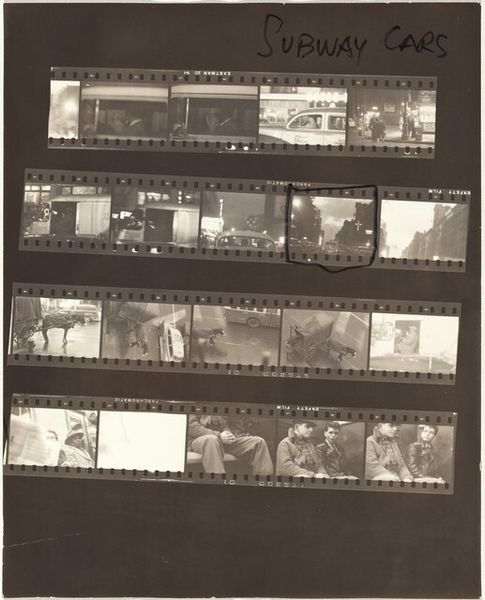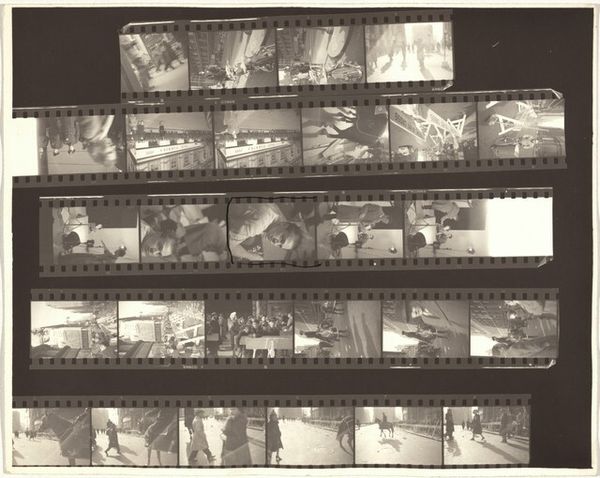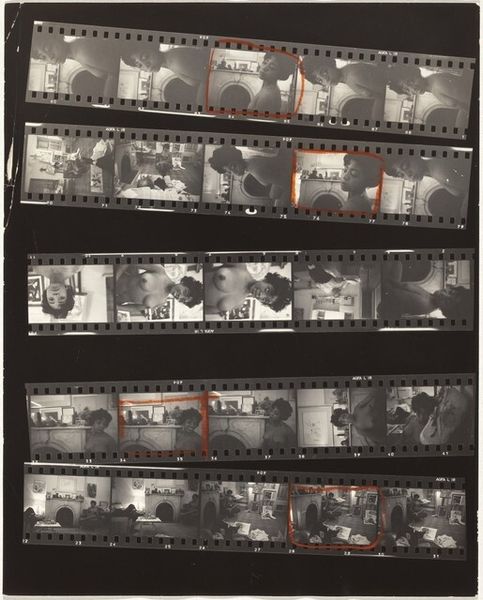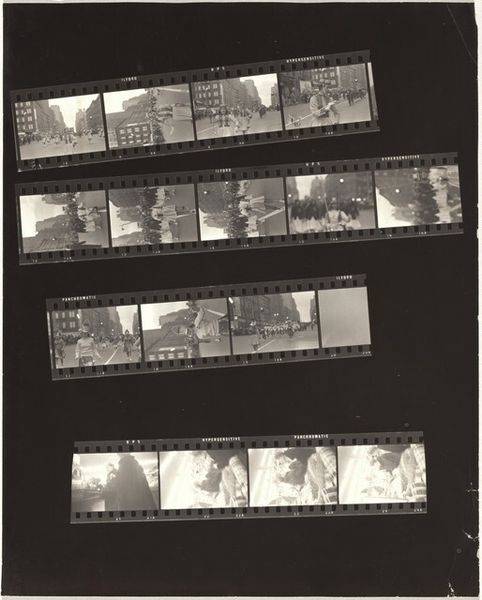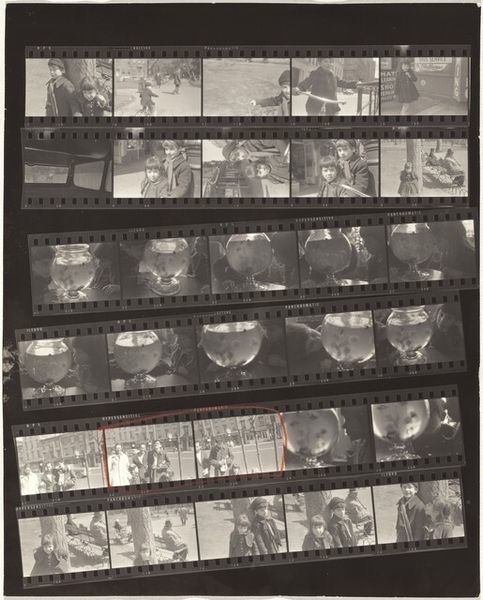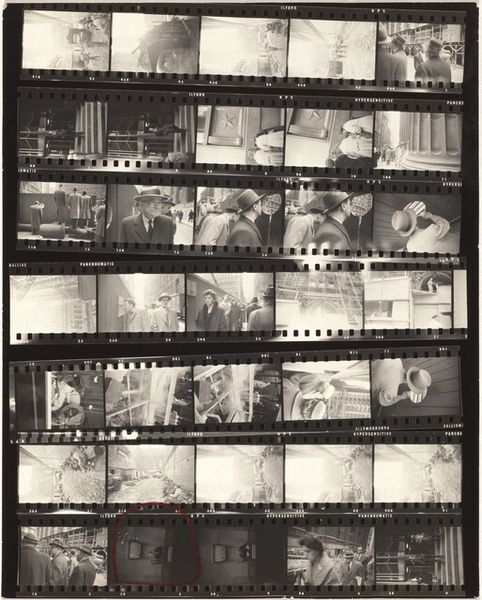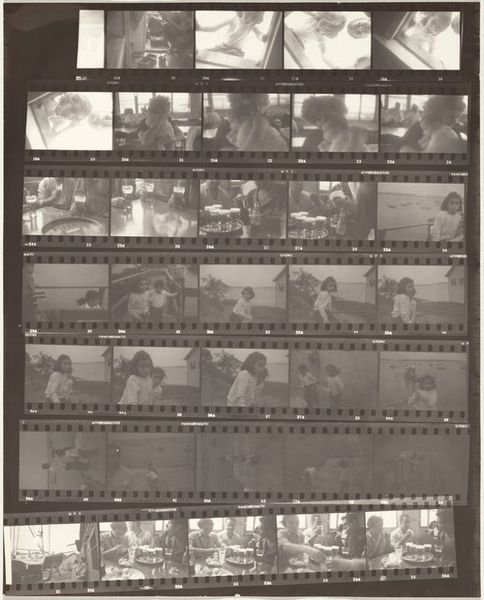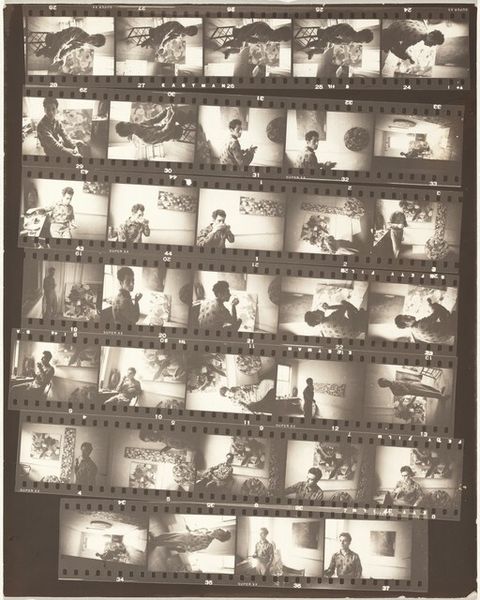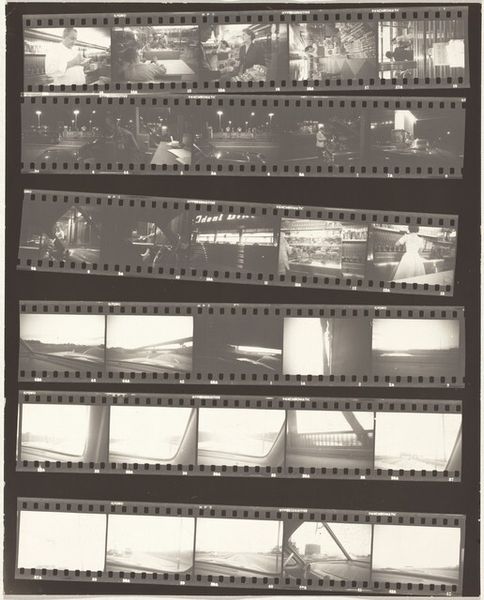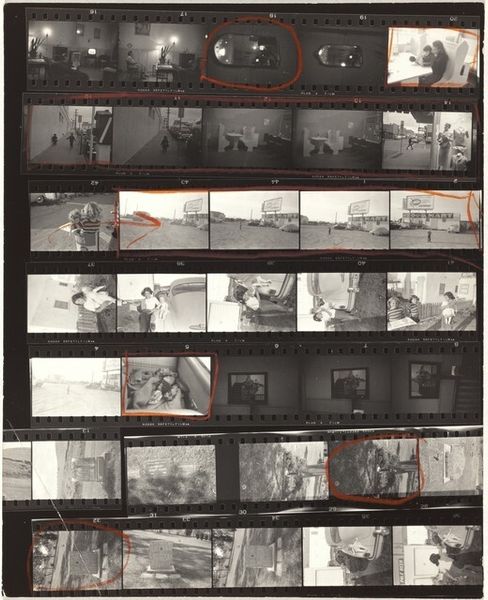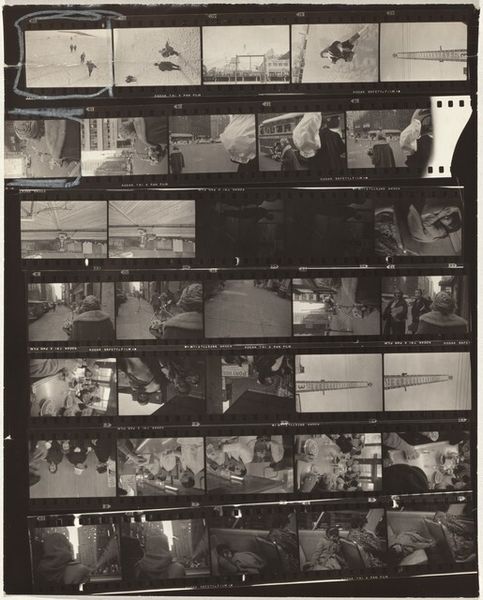
Dimensions: sheet: 25.3 x 20.3 cm (9 15/16 x 8 in.)
Copyright: National Gallery of Art: CC0 1.0
Curator: Looking at this gelatin silver print by Robert Frank, created around 1953 and titled "Pablo--Times Square, New York City no number," my initial impression is one of fragmented intimacy. It's a series of glimpses, almost like a contact sheet, into… what, exactly? It's not immediately clear. Editor: The "Pablo" in the title likely refers to Frank’s son, which gives some context to what feels like an unfolding narrative of domesticity and perhaps childhood in 1950s New York. Seeing the contact sheet laid out like this adds an extra layer of social commentary. It's not just a snapshot but an archive. Curator: Archive is such a cold word for what I'm sensing, though! It feels more like memory—incomplete, distorted, skipping frames. Notice how the light varies across each tiny frame? It's uneven, like sunlight through blinds, each scene catching the light for a fleeting second, gone the next. And how some are clearly staged? Are we looking at a documentary or a personal performance? Editor: I think we're looking at both. Frank's work often blends a personal, almost diaristic perspective with broader observations about American society. The apparent randomness is deceptive; this era had complex political and social factors in play. How are race, class, and gender represented or, perhaps more significantly, absent from these vignettes? We have to ask these questions. Curator: You’re right. Even those little absences scream volumes, don't they? There’s an element of unease too, despite the familiar settings. Some of the poses, the child looking directly at the camera…it throws me off balance, like a stage play when someone breaks the fourth wall. It challenges our notion of objectivity, of what is real or isn't. Editor: Exactly. Frank wasn’t simply documenting; he was actively interpreting the world through his own lens, both literally and figuratively. That blending of artistic vision and sociopolitical awareness is why his work remains so powerful. It anticipates later developments in photography and media studies as well as documentary theory. Curator: The more I stare, the more I'm intrigued, yet perplexed. This artwork’s less about finding answers and more about being led down a photographic, perhaps familial, rabbit hole, don’t you agree? Editor: Agreed. Its strength lies precisely in that ambiguity and the critical awareness it forces upon us, especially by considering our own biases when we explore such pieces. It's never truly possible to view something objectively.
Comments
No comments
Be the first to comment and join the conversation on the ultimate creative platform.
